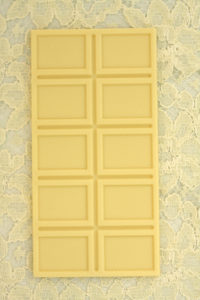
Chocolate is one of the world’s most universally beloved flavors. With seemingly endless variations from cocoa content to added flavorings to single origin varietals, the plethora of chocolate tastes creates a never-ending tasting experience for the chocolate connoisseur.
But what about white chocolate? It is so different in appearance, texture and taste from the chocolate we grew up with…that it begs the question, “Is it really chocolate at all?”
Well, sorry to break your hearts if you’re a fan of the sugary sweet stuff…but white chocolate can’t be classified as chocolate. This is due to its lack of chocolate solids, which is what remains after cocoa butter is extracted from cacao beans.
White chocolate is made from a blend of cocoa butter, milk solids, sugar, milk fat and lecithin — a fatty emulsifier that binds the ingredients together.
In 2004, the U.S. Food and Drug Administration established a “Standard of Identity” for white chocolate to ensure its quality and integrity. The FDA said to be called white chocolate, the candy must have at least 20% cocoa butter, 14% milk solids, and 3.5% milk fat — and no more than 55% sugar or other sweeteners.
An easy way to tell if the white chocolate you’re eating follows the FDA guidelines is that high quality white chocolate with cocoa butter has an ivory color as opposed to pure white. A pure white color means instead of cocoa butter, vegetable oil or some other fat was used during production.
|
|
|
There’s nothing wrong with enjoying the sweet candied confection. Some people love it. Others despise it. Just don’t call it chocolate.

